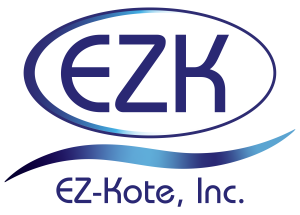
EZ-Kote provides a 21st-century solution for mold release applications. We utilize state-of-the-art, semi-permanent, water-based technology that does better than traditional mold release agents.
Our experts answer frequently asked questions about mold release agents.
Why do my industrial molds need better mold release agents?
Modern mold release agents outperform more traditional products in several aspects by:
- Preventing mold build-up
- Allowing molds to stay cleaner up to 10 times longer
- Reducing downtime between applications by providing a clean release
- Containing no VOCs
- Helping to reduce cycle time
- Having greater effectiveness with integral skin foam and rigid foams
- Releasing all reinforced plastics and composites
- Increasing productivity for your teams
- Achieving greater customer satisfaction
- Creating higher yields
- Improving work environment for employees
- Reducing maintenance issues
- Recording less downtime
- Producing fewer rejected & defective SKUs
- Reducing short cycle times
Related Post: Molding & Casting FAQs
How long does it take a mold release agent to dry?
Water-based mold release agents may take 15 to 30 minutes to cure.
Dye and cure times depend on several factors:
- Temperature
- Humidity
- Exposure to sunlight
- Substrate material
- Composition of the mold release agent
EZ-Kote’s water-based mold release agents allow for immediate mold prep to reduce shot cycle times and they cure readily after a few light coats for reapplication.
How often must I reapply a mold release agent?
Typically, you can reapply a mold release agent when releases become hesitant. Whether a spray or aerosol, water-based mold releases usually need two to three coats to optimize the mold release.
What are water-based mold release agents made of?
In addition to water, mold release agents contain proprietary mixtures of resins. Resins are ideal for mold releases because they resist heat, sticking, and do not stick to the objects that release from the mold.
Why are water-based mold release agents safer than solvent-based ones?
They do not contain hazardous VOCs, which can explode or become flammable under the right conditions.
Because there are no hazardous chemicals, companies do not need to take hazardous materials precautions during shipping or storage, which reduces transportation costs and labor costs at your site due to fewer restrictions on storage.
Related Post: 4 Key Advantages Of Water-Based Mold Release Agents Versus Waxes
What hazards, if any, do water-based mold release agents present?
Many of these substances carry a Class 1 or 2A category for hazards, which means an eye irritant.
Take these precautions:
- Wash thoroughly after handling
- Wear eye and face protection
- Rinse eyes cautiously with water if you get a water-based mold release agent in your eyes
- If inhaled, move to fresh air
What color are water-based mold release agents?
They are generally a milky white color.
At what temperature ranges are water-based mold agents good for?
Because they are water-based mold releases, they operate anywhere from room temperature up to 100 degrees Celsius (212 degrees Fahrenheit). They begin to evaporate when they reach the boiling point of water.
However, because they are water-based, there are no flammability or explosion hazards whatsoever.
How do I apply water-based mold release agents to substrates?
Either with a spray or aerosol.
It generally takes two to three coats to reapply the release agent to the mold.
Do water-based mold release agents have an odor?
If they do, the odor is mild.
Are water-based mold release agents acidic or alkaline?
The pH is around 4 (but not below 4), which means they are acidic.
That’s why they are listed as eye irritants and possibly skin irritants.
However, they are not corrosive. Anything less than a pH of 4 is considered corrosive.
How many water-based mold release agents are there?
EZ-Kote stocks at least a dozen water-based mold release agents in addition to creating custom formulations to meet your exact requirements.
On what classes of industrial products do water-based mold release agents work?
EZ-Kote’s formulas work for several classes of industrial compounds, including but not limited to:
- Rubber
- Silicone
- Polyurethane
- Elastomers
- Plastics (like PVC)
- Epoxies
- Phenolics
- Fluoroelastomers
- Nitrile
- Polyacrylate
- Peroxide-cured EPDM
What products will I need water-based mold release agents for?
Our formulas help your company produce a wide range of products, including but not limited to:
- Steering wheels
- Automotive dashboards
- O-rings
- Filter housings
- IMP skins
- Bumpers
- Carpet underlayment
- Shoe soles
- Rubber tires
- Single & dual-density foam
- Uracore headliners
- Sound deadening foam
- Foam
- Golf ball covers
- Hoses
- Belts
- Bicycle tires
- Golf ball cores
- Crumb rubber
- And more
Related Post: 5 Factors That Change The Effectiveness Of Mold Release Agents
Who can I contact about custom formulations of water-based mold release agents?
EZ-Kote has been in this business for 30 years. Our chemical engineers can create a custom formulation that fits your specifications.
Contact EZ-Kote or call (770) 720-1811 for more information on our mold release solutions for your company.
